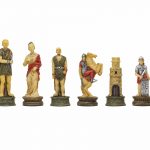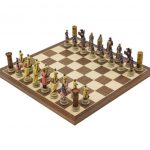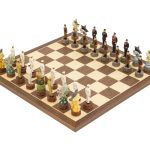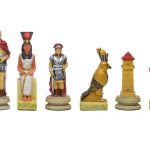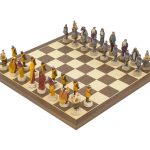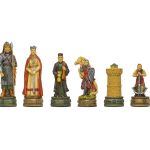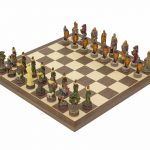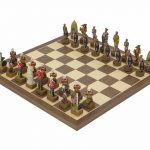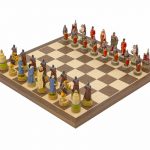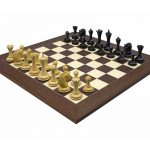Disclosure : This site contains affiliate links to products. We may receive a commission for purchases made through these links.
The Romans Vs Arabs Hand painted themed Chess set by Italfama
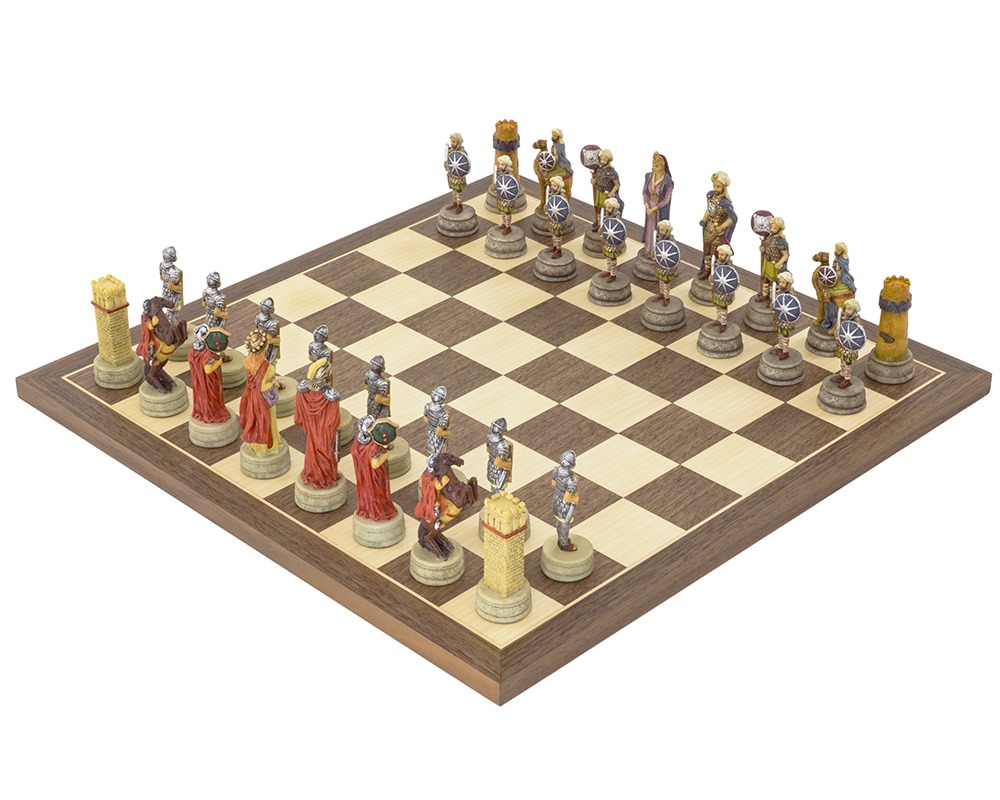
Presented with a beautiful 15.75 inch Spanish board. Exquisitely ornate. Painstakingly hand painted. 3.25 inch king. THE PIECES Yet another fine example of superb craftsmanship by Italama of Italy. The detail is outstanding in these historical figures. The Arab force is led by a strong king clad in body armour and a turban. His queens robe and crown, are so precise in detail. The bishop and pawns are handsomely clothed in costume of that period with an Arab looking castle for a rook. The most eye-catching piece in this set however are the Arab knights – a soldier upon a camel instead of the usual portrayal of a horse. The Roman king is every inch a majestic ruler, in his detailed body armour and cloak, with his beautiful queen looking radiant in her flowing gown. A centurion type character represents the bishop with the knight, as is the norm, a beautifully detailed horse and rider. A romanesque structure stands as the rook with pawns as chain-mail clad infantry. We have matched these stunning pieces with a beautiful 15.75 inch walnut and maple board from Spain however The Romans vs Arabs Themed Chess Men are also available on their own. Either way, they make a superb gift. THE HISTORY Under the development of the Rashidun (first four caliphs – the “Rightly Guided’) and the Umayyad caliphs (second four caliphs), The Arab vs Romans (Arab v Byzantine) wars were a series of conflicts. They started in the 7th century AD and carried on into the mid 11 century AD. The movement of Arabs from the Arab Peninsula (now Saudi Arabia) resulted in the taking over of Byzantium’s southern colonies (Syria and Egypt) by the Muslims in the 630s. Under the direction of the aggressive Umayyad Caliphs, the next half century saw the Muslims carry out continuous attacks into Asia Minor, twice threaten the capital Constantinople with occupation and outright conquer of the Exarchate of Africa, a Byzantine administrative division. Failure of the Second Arab Siege of Constantinople in 718 eventually saw the situation stabilise. Relations became more normal with the establishment and exchange of embassies and even periods of truce. Unfortunately though conflict remained, with almost annual raids and counter raids running well into the 10th century.










